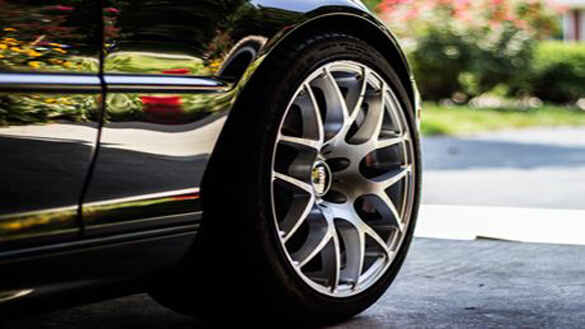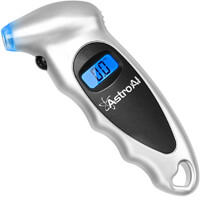 Living (and loving) Life
Living (and loving) Life
Note: The links in this post are affiliate links.
As you probably know, driving with improperly inflated tires reduces your car’s gas mileage.
And even worse, it makes it dangerous to drive at highways speeds and/or under poor weather conditions.
That’s why it’s so important to ensure that your vehicle’s tires are always inflated to the correct air pressure.
But guess what? If you’ve been inflating your tires to the maximum air pressure that printed on your tires’ sidewalls, you’re putting your tires, your vehicles and yourself in danger.
That maximum air pressure rating isn’t the pressure your tires should be inflated to. It’s actually the maximum air pressure the tires can handle without being damaged or failing outright.
If a tire happens to be inflated to its maximum air pressure, that pressure will inevitably increase as the ambient temperature rises.
That will result in the tire’s actual air pressure exceeding the maximum safe level during periods of hot weather.
In turn, that will render the tire less stable while you’re driving and more susceptible to sustaining a blowout or other type of damage after coming into contact with potholes or road debris.
And that of course is a bad thing.
What you should be doing is inflating your tires to their recommended air pressure, not their maximum air pressure.
The problem is the recommended air pressure isn’t always listed on the tire’s sidewall.
What you’ll need to do is check your car’s owner manual for the recommended air pressure and inflate your tires to that pressure instead of its maximum pressure.
If you don’t have the owner’s manual handy you can usually find the recommended air pressure printed on a label affixed to the driver-side front door frame. Just open that door and take a peek.
 Of course you can always take your car to a garage and have them check your tires’ air pressure for you, but you can buy an inexpensive air pressure gauge and check it yourself if you want.
Of course you can always take your car to a garage and have them check your tires’ air pressure for you, but you can buy an inexpensive air pressure gauge and check it yourself if you want.
They only cost a few bucks at your local Walmart, an auto parts store or at Amazon, and they’re very easy to use.
Important: If you plan to check the air pressure in your tires yourself you should try to make the checks after the vehicle has been sitting still for a while if at all possible in order to ensure the most accurate reading.
And now, here’s one final tip…
Under-inflation can be just as dangerous and costly as over-inflation. Check out this short video and you’ll see why.
Note: As always, you can watch the video at full screen by clicking the “square” icon in the lower-right corner of the video after it begins playing.